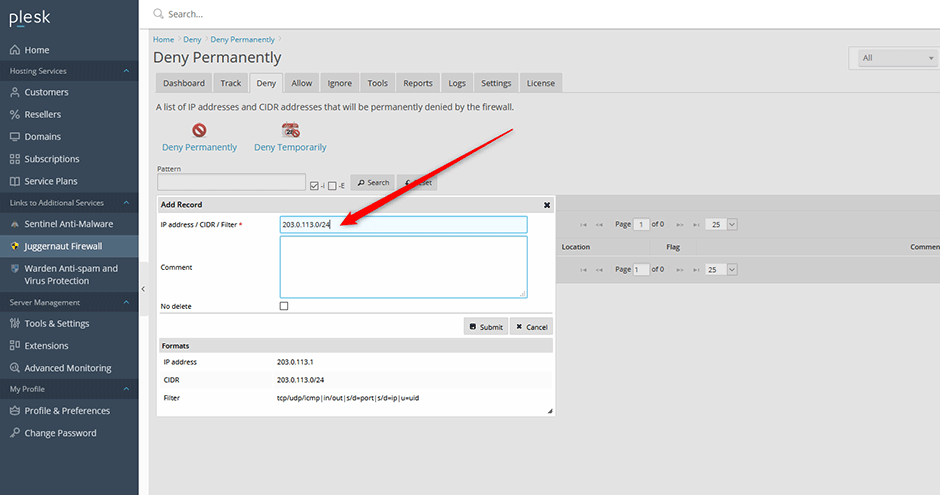Juggernaut Security and Firewall uses CIDR (Classless Inter-Domain Routing) notation rather than the common subnet mask 255.x.x.x when blocking, allowing, or ignoring networks.
For example if you wanted to block the 255.255.255.0 network for IP address 203.0.113.1 you would go to Deny -> Press the Add button on the grid and enter it as 203.0.113.0/24

Refer to the CIDR Subnet Table to find the CIDR equivalent of a decimal subnet mask.
IPv4
| CIDR Prefix | Total IP Addresses | Network Mask |
| /8 | 16,777,216 | 255.0.0.0 |
| /16 | 65,536 | 255.255.0.0 |
| /24 | 256 | 255.255.255.0 |
| /25 | 128 | 255.255.255.128 |
| /26 | 64 | 255.255.255.192 |
| /27 | 32 | 255.255.255.224 |
| /28 | 16 | 255.255.255.240 |
| /29 | 8 | 255.255.255.248 |
| /30 | 4 | 255.255.255.252 |
| /31 | 2 | 255.255.255.254 |
| /32 | 1 | 255.255.255.255 |
IPv6
| CIDR Prefix | Total IP Addresses |
| /64 | 18,446,744,073,709,551,616 |
| /56 | 256 /64 subnets |
| /48 | 65,536 /64 subnets |

